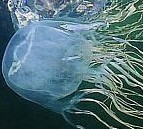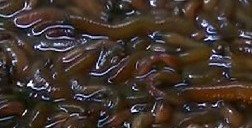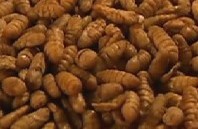-

"hibiscustour", three separate sites -

Curiosity. Things, drôle, science, société.. -

Ideas perso. Household, Practical life, D.I.Y, Computering.. -
Islands and lagoons New Caledonia, Polynesia (part).

|
|

The water, air of futur, the taste, arnaques, food synthetic, food in the world, human body .
 The water of jellyfish. The nightmare of both swimmers who are stung and fishers, which get them back in their nets, it is jellyfish.
The water of jellyfish. The nightmare of both swimmers who are stung and fishers, which get them back in their nets, it is jellyfish. |
flavor agent (after sweet, bitter, salty and acid). The monosodium glutamate is widely used in the Chinese and Japanese cooking, and East in general. For thousands of years, the Japanese have put seaweed, the kombu in their food to improve its taste. In 1908, glutamate mosodique has been identified as the main component in kombu. Excerpt from industrial slow processes until 1956, it rose to the fermentation of molasses from sugar beet and sugar cane. Output is currently about a few hundred thousand tons. The glutamate is an amino acid (protein) that is found in meat, vegetables, poultry, milk and derivatives (Roquefort, Parmesan). There is some pizza in Italy, soups and stews in the USA, cereals and chips in England. This fifth taste is described as being close to a meat broth. |
Once chewed for a minute, the red berries as big as cherry tomatoes, alter the perception of taste : cheese, mustard, Brussels sprouts, pickles, dark beers or strawberries, lose their acidity, bitterness or unpleasant taste. The effect lasts for half an hour. It is a protein of the fruit Synsepalum ducificum called Miraculin, which reacts with the acidity. But everyone did not react, or do not like her contact in the mouth. Drinks containing this fruit are still produced. "The World", June 2008 (New York Times). |
Talking about eggs eggs. Rémy, stockbreeder in Vaucluse, recalls that the eggs are soft at the time of the laying and that they harden with the air.
One can thus give them the form one wants, or make some marks that call upon miracles, specially at the time of eclipses ; like this lady
which found an egg
Omelette without breaking eggs (restaurants).
In a "conditioning"eggs plant, the machine breaks 30,000 eggs per hour, separating the white
from yellow. ("Marianne" Jan. 2009). Everything can be shipped in bags to restaurants, which would no longer break eggs for long. The
problem is thepreservation of the two "products" quality. The famous Baril.. pasta factories "with fresh eggs", were closed at one time due to rotten eggs or with embryos.
Television Reporting.
Industrial breeding class. There are conveyor belt and chick dumping machines.
Hens are free inside a shed, with a maximum of 7 animals per square metre. This breeding count for 90% of the eggs in France.
It would deserve a tourist classification at UNESCO..
Social culture food.

|
fresh worms, roasted insects, garlic jellyfish..
The Adams familly, fantastic characters of an old TV sitcom very British, were eating some big eyes boiling inside a rather "full of life" sauce. |

|
Some English people would have a penchant for the sheep's belly, while others shiver, probably as for some of our dishes: calf's head or sweetbreads, tripe and various offal.
Lamb eyes and rancid shark.
Brian Tacker, a comedian travel writer, reports that in Iceland, among the locals, he ate smoked puffins, whale steak - until then everything was normal - lamb's eyes and "rancid shark", a quite original specialty.
You put the shark in a hole and pee on it (quite copiously?, I don't know).
We cover it up to bury it properly and forget it for a while.. 6 months!! it is then - as we can imagine - medium rotten..
It is served cold like sashimi. According to Brian, it's pretty good but the smell is terrible. According to the magazine "Ulysses", 01-02 2008.
There is an equivalent in Polynesian cuisine, but in seawater.
|
Lead: a while late, however, the dangers of lead have also been denounced . In particular lead in decorative paints, including murals. Later is better than never, but we didn't become more cautious after.. Very timidly, Europe has set up a list of dangerous chemical molecules but they are constantly being created. See " "unsympathetic chemistry" |
|
Do not forget to make a wish or say a short prayer so the time is sacred. The time then come to cook it in a bain-marie - a dozen hours anyway - then let rest until Christmas. It will then reheated while preparing an additional sauce. Traditionally, a symbolic object is put in it such as ring (love), button (old boy), or a little pig (greedy). In a British thriller, a killer had added bits of broken glass, and the success of the pudding was fatal. |
|
|
snails, foie gras and Brandy.
Anglish fancy to mock us, the French but they ended up putting eating snails and foie gras like us. Perhaps do they also eat frogs' legs.
This after having made a bad copy of our good Cognac with their Brandy.
snails they have opted for organic farming to Ensure a unique taste, while allowing these little animals to live with dignity. For that, nothing but clover and radish Their "horse-radish is black. And 35 inches of living space for everyone. |
|
| Bird story. The famous nest of swallow, best of the gastronomy among so much others, is produced - and not built - by the swallow. It is indeed only made with its saliva. In front of the financial interest of the thing, we greet - in China - swallows in his own house, and one let them the whole if necessary. Buildings for swallows are also built, like for the pigeons in old time, but much vaster. Pigeons were brought up for the meat, not for their nest. The nest of swallow, once on the table, it resembles a whitish mass a little translucent and sticky, because one moists and makes cook what you know. |
| Beef of hormones and chicken of bleach
France has been long refusing the meat from hormone-bred beef that the United States want to impose. We know it's war. Refusal of our goose liver, raw milk cheeses etc.. everything is a pretext. Today's breeding bulls, huge and barely able to walk, are quite far from the bulls of yesteryear, living in the fields amid the herd", and that it was better not to get exciteds. The deformed hormone-bred beef/cows "made USA", with their monstrous square hindquarters and their mammals dragging on the ground, are much worse. In France, for a few sad years we have known chickens fed on hormones and eating fish meal, with soft bones and pinkish flesh. Until consumers refuse them. Now the North Americans would like to impose bleach-treated chickens and I don't know what else. |
Unsavoury treatments are probably still being practiced here and there, but some practices have been banned, like the tenderizing by the piercing with spikes. Pre-cut meat is not allowed in butcher shops, however, supermarkets and fast food restaurants - Mac Do in particular - have the right to do so. With the deadly dangers that this can present in the event of contamination, untimely thawing and refreezing, exceeding the date, or reconditioning". |
|
Today, algae are the future, because when we have eaten our last IPod, we will have to find something else (it's not from me, but a criticism of the technological invasion). So we think of feeding the farmed fish with algae, of course, of breeding. These algae, Franco-Russian or not, are already everywhere. One of these celebrities is the red alga "Chondrus Chrispus". Very common, it is used to produce thickeners and stabilizers used in flanks, ice creams, or toothpastes. |
Here are the unexpected "Crêpes de France" (Hamburg). We didn't dare to taste them; My daughter did, and told the man it wasn't French ones ! Mainly compared with Brittany ones, very thin. |
|
They are very complex and contain countless vivid or mineral elements that they have collected from vivid soil, vivid air and solar radiation. We owe absolutely everything, from vegetables, fruit to coffee or chocolate, to these "savages", and even to the previous stage, to animals. The plants, shoots, roots, roots, leaves, fruit and berries that we naturally buy in grocery stores have been selected for hundreds of millions of years, first by animals - before eating it, the monkey cuts the tip of the banana that may contain a germ, and Kenya coffee has been spotted by the behaviour of an animal that ate it, and the natives have consumed it as it was at first. We are currently tracking an African monkey which know how recover itself for its intestinal problems. It is only one of many cases. This quest for food and medicine has killed many people and it is not over, if only with mushrooms. The origin of our loves and medicines, when we know "a part of their history", is edifying, such as |
The majority of humanity, and all animals, find the necessary elements, except famine or exceptional deficiency, and regulate their quantity whatever the food absorbed, as long as it comes from living organisms. Spinach - it's a joke - broccoli, quinoa or not ! Many people feed 80% only on rice, or beans, chewed leaves... ! For some animals, it is the only dish. like the panda (bamboo). This does not prevent them from living a long time like the land turtle, which does not know "food supplements". On the other hand, our pets are starting to get our diseases... |
|
The human body and its composition (source, Quid 2004 and 2005) 60% water, 39% fat, carbohydrates, proteins and 1% mineral salts: the quantity of water varies according to time and heat. Body composition for a 70 kg individual. quantities in kilos: oxygen 45.5 (including that contained in water, formula H2O, i.e. one atom oxygen for two hydrogen)- carbon 12.6 (structuring element of cells, bones...) - hydrogen 7 (including that contained in water, see oxygen) - nitrogen 2.1 - calcium 1. macroelements: sulphur, phosphorus, magnesium, iron, calcium ; trace elements (minute quantities) : boron, cobalt, copper, manganese, molybdenum, zinc. Quantities in grams: magnesium 39 mg - iron 3 - zinc 2 - manganese 0.2 - copper 0.15 - iodine 0.03 - traces of nickel, cobalt, aluminium, molybdenum, vanadium, lead, tin, titanium, bromine. |
![]()
![]()